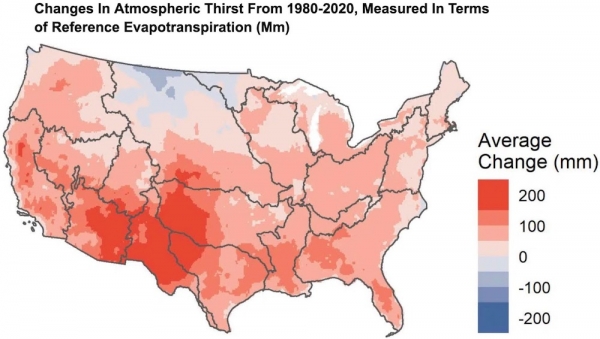In the western U.S., the impacts of drought conditions in the 21st century are increasingly evident as extended fire seasons, dwindling water supplies, and widespread tree mortality are becoming more common occurrences. Fundamentally, drought is a shortage of water that is driven by an imbalance between supply and demand.
From a meteorological perspective, periods of low precipitation (i.e., the supply side) have historically been the dominant driver of drought, but because a warmer atmosphere can hold more water, the demand side of drought has the potential to have a greater influence than it has in the recent past as temperatures increase with a changing climate.
Increases in atmospheric water demand results in more water being drawn from the land surface into the atmosphere through evaporation and transpiration from plants, which can limit the amount of water available to humans and ecosystems, especially in arid regions where less water is available in the first place. And while temperature changes across the U.S. of 1–2 degrees over the past 40 years are well known and established, changes in atmospheric evaporative demand—defined as the amount of water that could be transferred from the land surface to the atmosphere, given atmospheric conditions and an unlimited supply of water—are not as well quantified and may be amplified or subdued by changes in other climate variables that go into calculating evaporative demand, such as wind speed, solar radiation, and humidity.
Continue reading at National Integrated Drought Information System
Image via National Integrated Drought Information System


